(Page créée avec « 2) They are a source of vitamins. ») |
(Page créée avec « Lacto-fermented vegetables have the same amount of vitamins, and sometimes more, as raw vegetables. ») |
||
| Ligne 53 : | Ligne 53 : | ||
2) They are a source of vitamins. | 2) They are a source of vitamins. | ||
| − | + | Lacto-fermented vegetables have the same amount of vitamins, and sometimes more, as raw vegetables. | |
3) Ils participent au bon fonctionnement de l'intestin et du système immunitaire. | 3) Ils participent au bon fonctionnement de l'intestin et du système immunitaire. | ||
Version du 17 mai 2018 à 11:16
Description
Preserve your raw vegetables for months with this lacto-fermentation technique.
Sommaire
Sommaire
- 1 Description
- 2 Sommaire
- 3 Introduction
- 4 Étape 1 - Préparation des légumes
- 5 Étape 2 - Préparation des bocaux
- 6 Étape 3 - Réalisation de la conserve dans le cas de légumes rappés ou découpés
- 7 Étape 4 - Réalisation de la conserve dans le cas de légumes entiers
- 8 Étape 5 - Stockage
- 9 Étape 6 - Consommation
- 10 Notes et références
- 11 Commentaires
Introduction
This tutorial has been created in collaboration with Claire Yobé, a lacto-fermentation instructor with over thirty years of experience in this field.
The aim is to easily preserve surplus vegetables for long-term storage, whether from your vegetable patch (in Summer for example), or because you have bought more vegetables than you needed.
Key facts on food wastage:
- 1/3 of food produced around the world goes off or is wasted.
- In France, 50% of waste happens at home.
- A person in France wastes 20kg of food per year.
- 19 % of fruit and 31% of vegetables are wasted, making these the most wasted produce.
What is lacto-fermentation, or lactic acid fermentation?
Lacto-fermentation is the conversion of sugars into lactic acid by lactic acid bacteria (naturally present specific microorganisms).
This method of fermentation has been used for centuries to preserve milk (e.g yoghurt), vegetables (e.g saurkraut), meat (e.g. cured sausage) and even fish (e.g fish sauce).
How is it possible to preserve vegetables by means of lactic acid fermentation?
Vegetables carry microorganisms on their surfaces (microscopic fungi, bacteria) which, when left in the open air, cause them to rot. The absence of air (anaerobic conditions) and a small quantity of salt to inhibit other bacteria, encourages the lactic acid bacteria to grow: this is the start of the lacto-fermentation process.
These bacteria grow by feeding off the sugars present in the food, and converting them into lactic acid. The amount of lactic acid gradually increases and the brine becomes more and more acidic.
This acidity neutralises the rotting process. When the environment is acidic enough (approx. pH 4), the lactic acid bacteria are also inhibited. The product becomes stable, which allows for long term storage of up to several months and sometimes even years.
What kind of vegetables can be preserved with lacto-fermentation?
Nearly all vegetables which are eaten raw can be preserved this way. (E.g cabbage, cucumber, carrots, beetroot, etc...)
What are the nutritional and health benefits of lacto-fermented vegetables?
1) They aid digestion and nutrient absorption.
Enzymes in lactic acid bacteria "pre-digest" vegtables, which helps the digestion process as well as the absorption of nutrients and minerals by the body.
2) They are a source of vitamins.
Lacto-fermented vegetables have the same amount of vitamins, and sometimes more, as raw vegetables.
3) Ils participent au bon fonctionnement de l'intestin et du système immunitaire.
Les ferments lactiques sont des "pro-biotiques" pour la flore intestinale qui joue notamment un rôle important de barrière immunitaire.
Comment consommer les légumes lactofermentés?
Les légumes lactofermentés peuvent se consommer très régulièrement, tous les jours, en accompagnement par exemple.
Une trop forte consommation d'un coup peut provoquer des douleurs d'estomac dues à une acidité importante.
Ils doivent faire partie d'une alimentation variée et équilibrée.
Y a t-il des risques avec la lactofermentation?
Contrairement à la conservation par traitement à la chaleur (ex: stérilisation) ou à la congélation, qui peuvent présenter de grands risques en cas de problèmes (mauvaises fermetures, décongélation involontaire) et provoquer par exemple le développement de la toxine botulique, la lactofermentation est un procédé très sûr.
Le milieu acide permet notamment d'éviter le développement de pathogène.
Cependant, en cas de doutes, de mauvaises odeurs ou de couleurs inappropriées, ne pas hésiter à jeter la conserve.
Matériaux
- Légumes qui se mangent habituellement crus.
- Sel fin
- Eau
Outils
- Bocaux et couvercles associés, (si possible couvercle verre avec joint)
Étape 1 - Préparation des légumes
- Eplucher et laver soigneusement les légumes
- Selon la convenance, les rapper ou les couper en petits dés / fines lamelles
- Dans le cas de légumes qui n'ont pas vocation à être coupés, les laisser tel quel après lavage (ex: haricot vert)
Étape 3 - Réalisation de la conserve dans le cas de légumes rappés ou découpés
- S'assurer d'avoir les mains bien propres
- Disposer une première couche de légumes au fond du bocal (2cm)
- saupoudrer une pincer de sel
- Tasser la couche de légumes, par exemple à la main
Remarque: Tasser permet de faire pénétrer le sel dans le légume afin de favoriser l'extraction de jus et de chasser le maximum d'air
- Recommencer l'opération jusqu'à remplir le bocal
- Laisser 1 à 2 cm de vide entre le couvercle et la dernière couche de légumes: la fermentation dégageant du gaz, du jus peut déborder en cas de remplissage trop important
- Fermer le bocal
- Laisser 3 jours à vue dans la maison pour déclencher la fermentation des ferments lactiques naturellement présents
- Si le niveau de légumes a diminué du fait de l'extraction du jus par le sel, il est possible de compléter
- Bien vérifier que tous les légumes soient recouverts de leur jus jusqu'en haut du bocal: c'est ce jus qui garantie l'anaérobiose, l'absence d'oxygène
Étape 4 - Réalisation de la conserve dans le cas de légumes entiers
- Remplir le bocal du maximum de légumes possible
- Ajouter de l'eau salée (10g de sel pour 1 kg de légume)
- Bien vérifier que tous les légumes soient recouverts d'eau jusqu'en haut du bocal, c'est l'eau qui garantie l'anaérobiose, l'absence d'oxygène
- Fermer
- Laisser 3 jours à vue dans la maison afin de lancer la fermentation des ferments lactiques naturellement présents
Étape 5 - Stockage
- Par la suite, stocker la conserve dans un endroit sec, à l'ombre et si possible le plus frais de la maison/appartement (type cellier, arrière-cuisine ou cave)
- Attendre 6 semaines pour que le processus de fermentation ait bien eu lieu et que le produit se stabilise. Par la suite, le bocal peut-être conservé plusieurs mois / années.
Étape 6 - Consommation
- Un bocal peut être ouvert et consommé sur plusieurs jours sans problème, ça n'exclue pas de dimensionner les bocaux au nombre de personnes de la maisonnée
- Consommer les légumes lactofermentés un petit peu tous les jours pour en tirer le meilleur profit (cf intro)
Notes et références
- Vidéo tuto réalisée par Camille Duband et notice écrite réalisée par Pierre-Alain Lévêque pour le Low-tech Tour, Avril 2018
- Connaissances et savoir-faire transmis par Claire yobé, ferme de keroueze
- ARTE, Le gaspillage alimentaire en 7 chiffres clés
- National Geographic, Un tiers des aliments produits est perdu ou gaspillé
- Wikipedia, lactofermentation
- Blog ni cru ni cuit
Yes
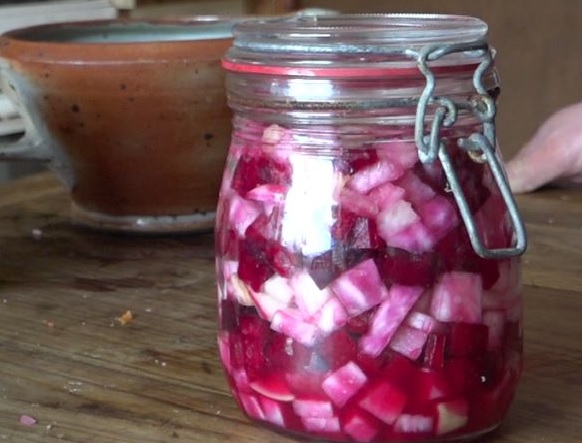
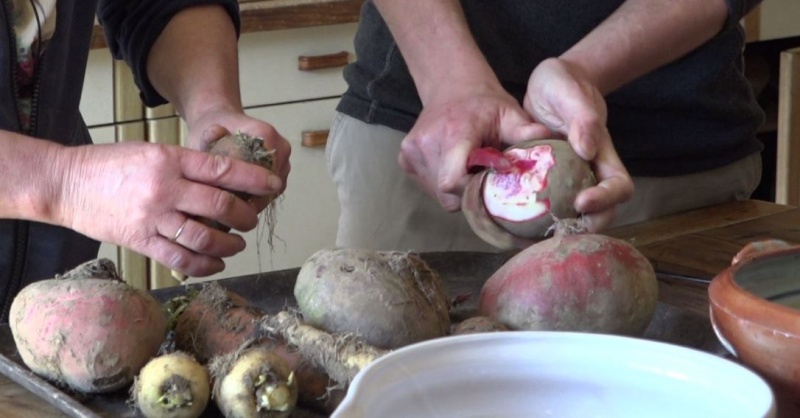
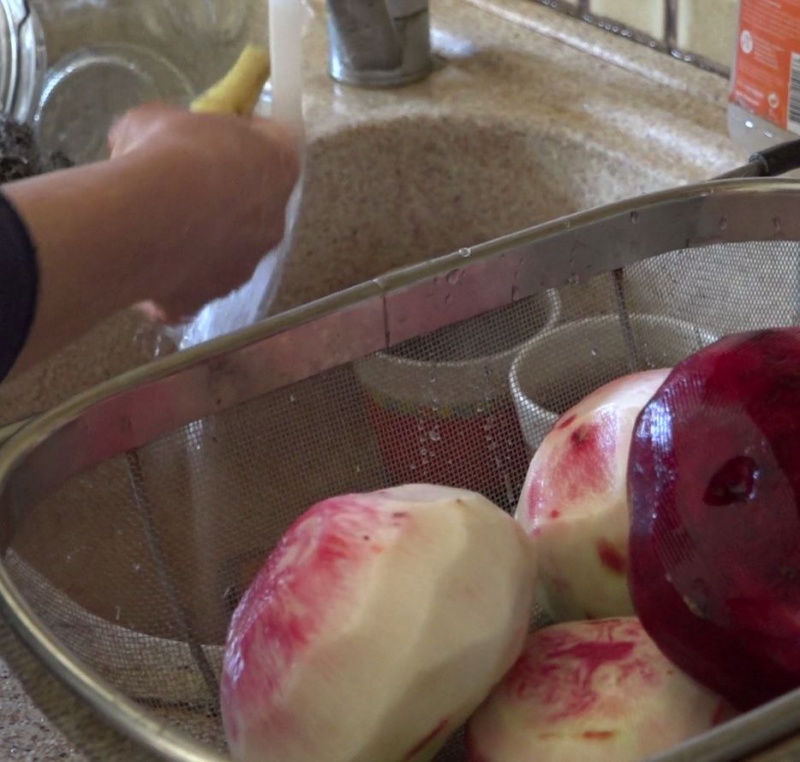
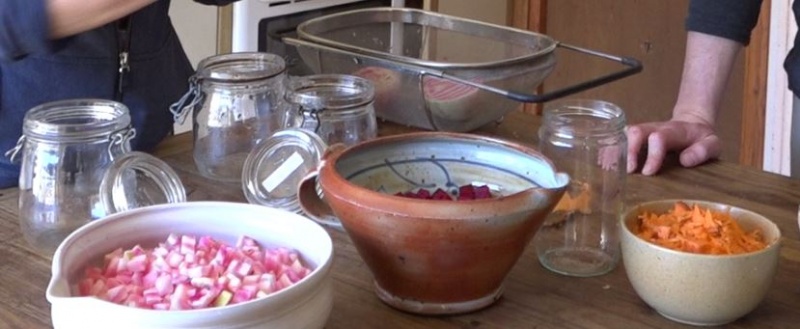
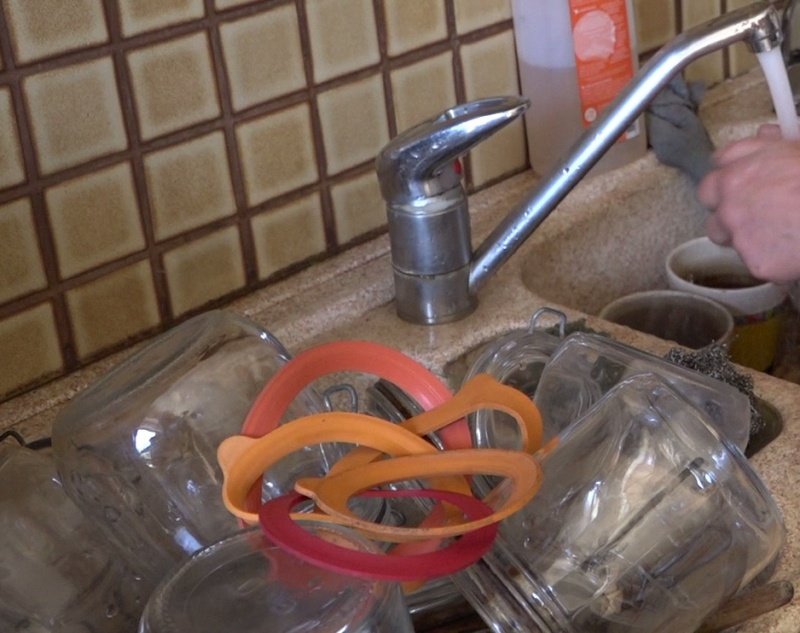
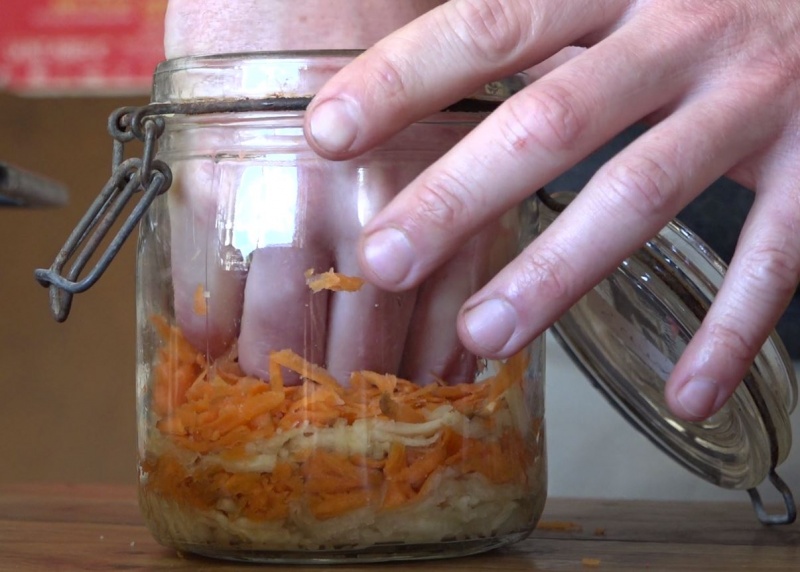
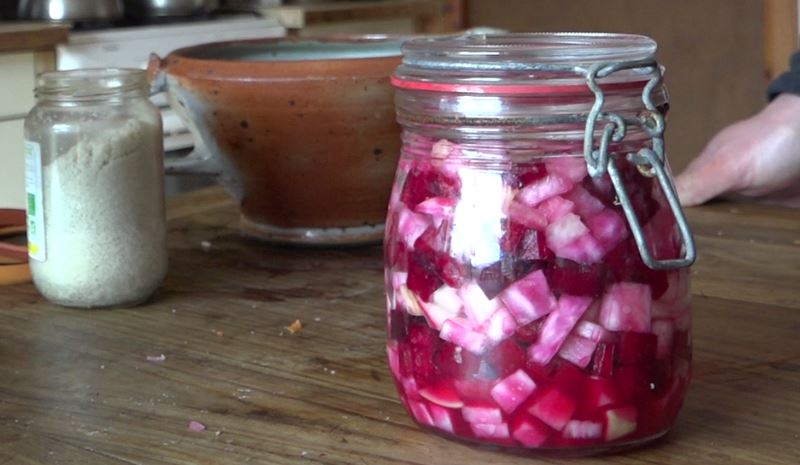
 Français
Français English
English Deutsch
Deutsch Español
Español Italiano
Italiano Português
Português